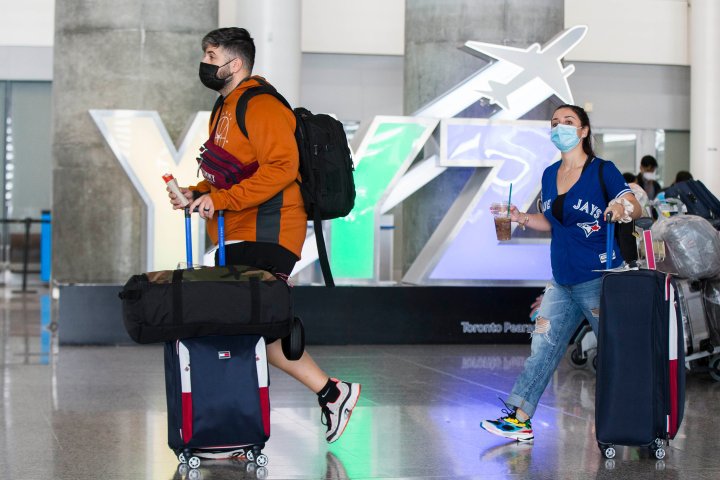Canada’s getting an international vaccine passport. Here’s how it will work

Canadians can now get a COVID-19 proof of vaccination form for international travel, Prime Minister Justin Trudeau announced Thursday.
Here’s what you need to know.
The form is a pdf or other document. On the first page, it includes your name, date of birth and COVID-19 vaccination history: which vaccines you got and when.
It also includes information on which province is issuing your proof of vaccination, a Canadian government logo, and a QR code.
According to the federal government, the form does not include any personal medical information beyond the type of COVID-19 vaccine, its lot number, and the date each shot was administered.
While the first page of the form is common to all participating provinces, some provinces might choose to add a second page and its content can vary province by province.
If you live in Newfoundland and Labrador, the Northwest Territories, Nova Scotia, Nunavut, Ontario, Quebec, Saskatchewan or the Yukon, you can download your proof of vaccination from their health ministry websites now, with other provinces to come — though they did not provide a specific timeline.
The government of Canada has a link to check if it’s available in your province and links to each province’s download site.
You might already have the file. For example, Ontario’s new COVID-19 proof of vaccination forms, issued over the weekend, conform to the federal standard.
If your proof of vaccination form says “COVID-19 Proof of Vaccination” at the top of the document, includes logos for your province or territory as well as a government of Canada flag logo, your name and date of birth, and your COVID-19 vaccine dose information, it might be the federal form.
Some provinces, like Quebec, will have a separate link on their websites to download the federal form for international travel, said Alexander Cohen, press secretary for Immigration Minister Marco Mendicino. This form will be different than the one you might use within a province or upload to a provincial app.
Other provinces might adopt this method too, and issue two different proofs of vaccination, Cohen said.
You can save the file onto a mobile device or print off a paper copy.
If you’re planning to travel, the government recommends having both a paper and an electronic copy of your vaccination proof.
You will still need to show a piece of personal identification, like a passport, alongside your vaccination document.
There are currently no plans for the federal government to develop an app for use nationwide or for travel, like some European countries such as France have done, Cohen said.
You will need to show the proof of vaccination – along with ID – when travelling by plane, train or cruise ship within Canada as of Oct. 30.
There will be a grace period until Nov. 30, in which you can show proof of a negative COVID-19 test within 72 hours of boarding your plane, train or ship instead of proof of vaccination. This is to give time for people to get vaccinated, according to the government website.
You will also need to show this document if you’re boarding a plane in Canada to an international destination.
This document can also serve as your proof of vaccination when travelling internationally, the government says. However, having this document doesn’t guarantee that another country will let you in, they warn. You will have to check local travel guidelines before you arrive.
Provinces might also choose to use this proof of vaccination form to control access to non-essential services, the federal government says.
The government still recommends against non-essential international travel.
If you do travel, you’ll also need to show your proof of vaccination in order to get back into Canada. You can upload this document into the ArriveCan app up to 72 hours before your arrival, or before you board the plane.
-with files from Global News’ Rachel Gilmore
by Global News







